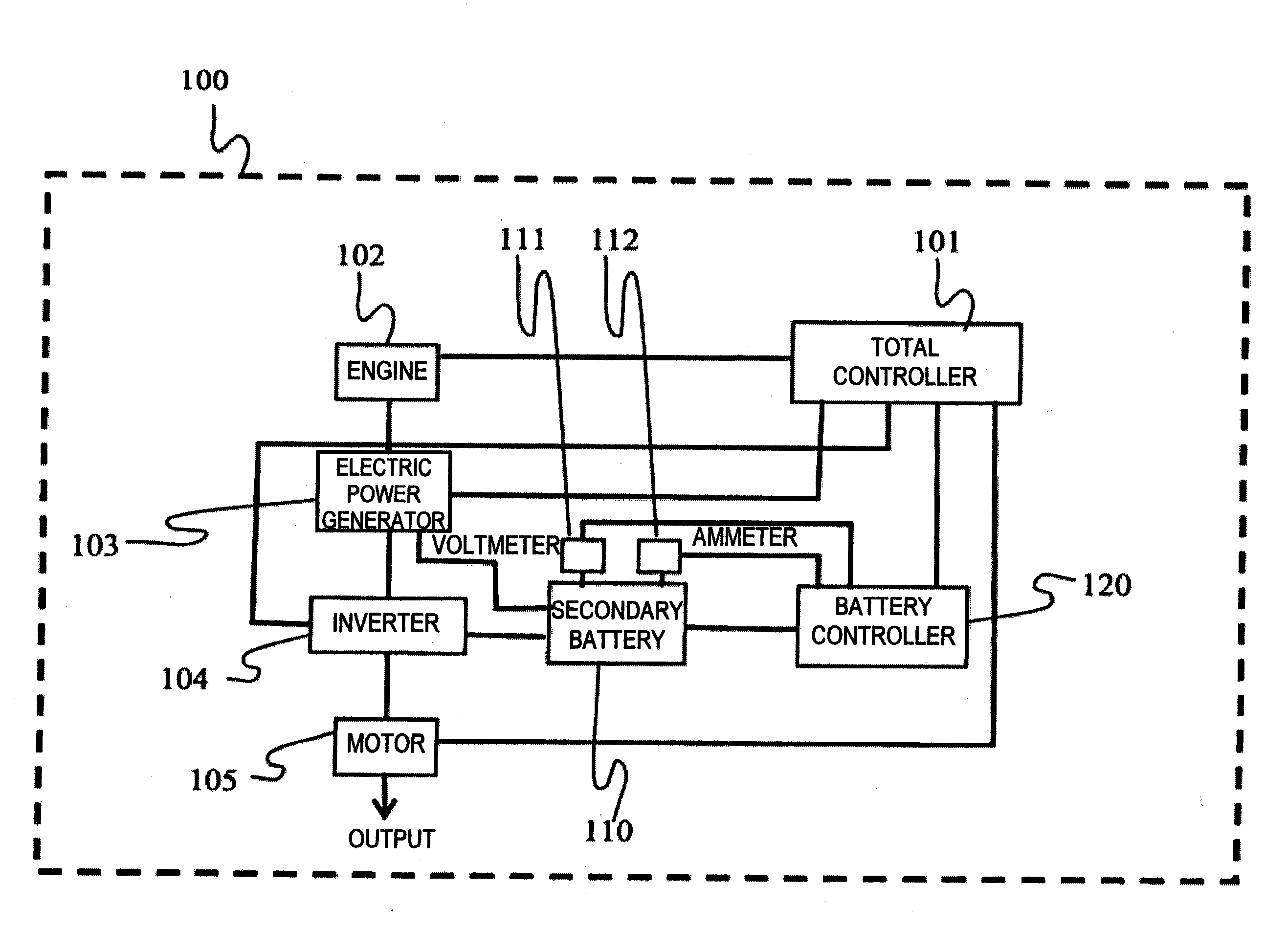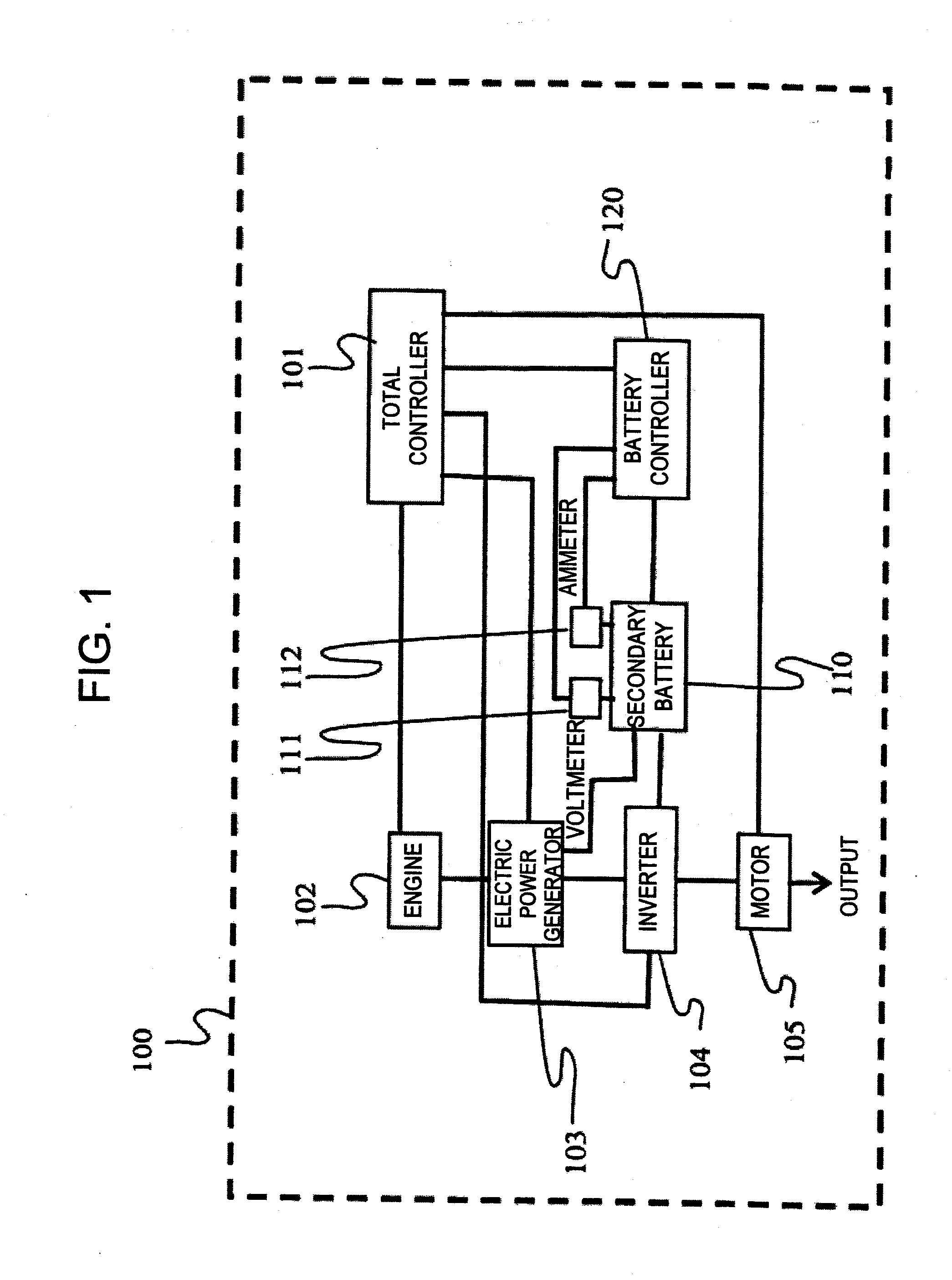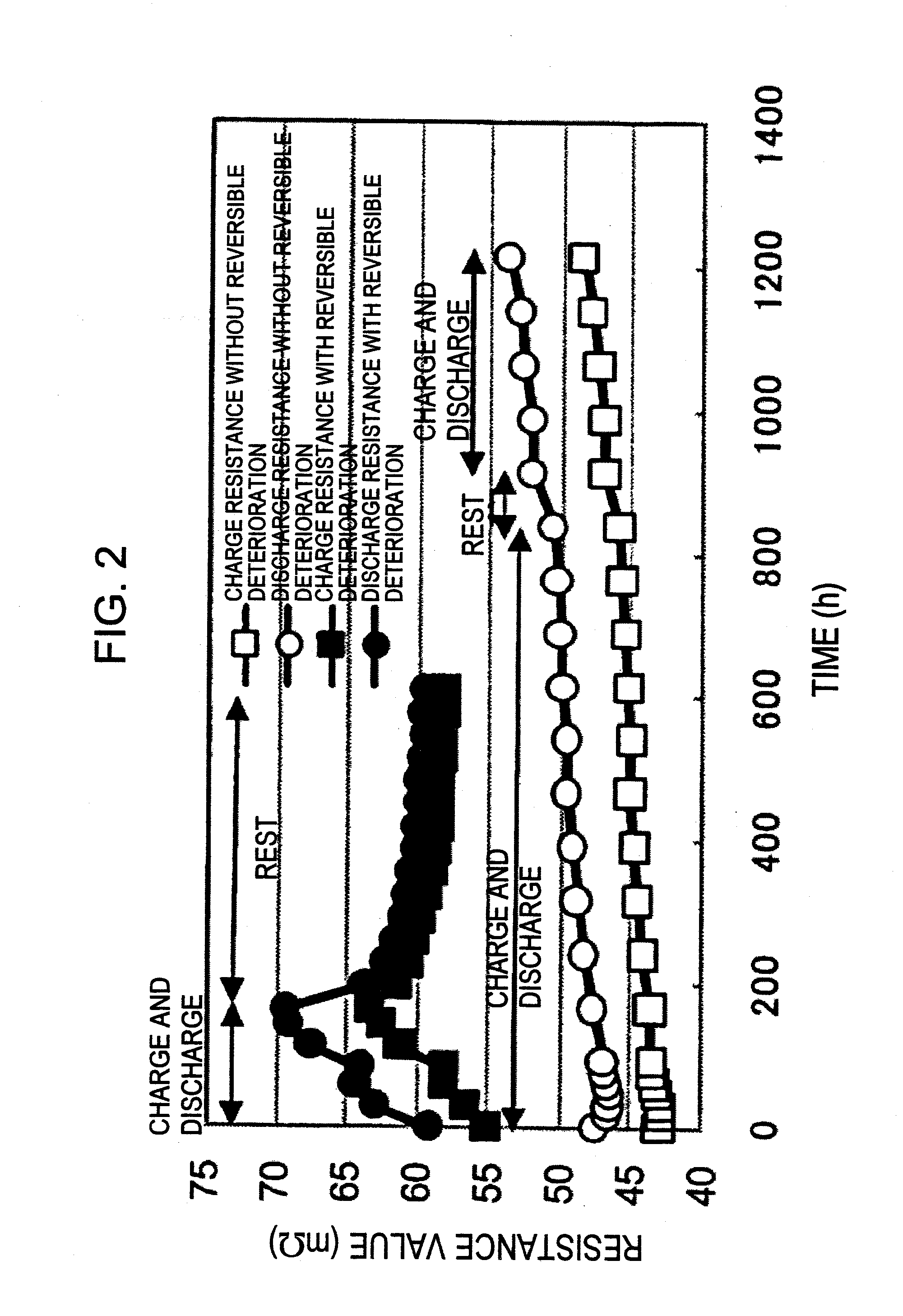Secondary battery system
a secondary battery and battery technology, applied in the field of secondary battery systems, can solve the problems of affecting the service the deterioration of the life of secondary batteries, and the deterioration of the life of secondary batteries, and achieve the effect of increasing the capacity of secondary batteries
- Summary
- Abstract
- Description
- Claims
- Application Information
AI Technical Summary
Benefits of technology
Problems solved by technology
Method used
Image
Examples
embodiments
Embodiment 1
[0046]In the present embodiment, the present invention is applied to a hybrid system for automobiles, and a system configuration diagram is illustrated in FIG. 1. A hybrid system 100 includes an engine 102, an electric power generator 103, an inverter 104, a motor 105, a total controller 101, a secondary battery 110, a voltmeter 111, an ammeter 112, and a battery controller 120. An output of the engine 102 is converted into electric power by the electric power generator 103, and is connected to the motor 105 via the inverter 104. In addition, the secondary battery 110 is also connected to the motor 105 via the inverter 104.
[0047]The battery controller 120 calculates the state of the secondary battery and the upper limit value of electric power which can be charged and discharged, by means of the voltmeter 111, the ammeter 112, and the like connected to the secondary battery 110, and outputs the results to the total controller 101.
[0048]In the hybrid system 100, at the ti...
embodiment 2
[0082]In order to judge the reversible resistance increase, in Embodiment 1, the change characteristic of the ratio of the discharge direct current resistance to the charge direct current resistance is utilized, and on the other hand, in the present embodiment, the rates of increase of the discharge direct current resistance and the charge direct current resistance are focused on.
[0083]That is, the values of the discharge direct current resistance and the charge direct current resistance in FIG. 2 are shown in FIG. 4 as the rates of increase when the values before the start of the experiment are assumed as 100%. Black plots represent results which are obtained when the charge and discharge experiment is performed on the capacity of the secondary battery at a high current density. Further, square plots represent a temporal change in the rate of increase of the charge direct current resistance, and circular plots represent a temporal change in the rate of increase of the discharge dir...
embodiment 3
[0091]In the present embodiment, description is given of an example in which the present invention is applied to a hybrid system for automobiles which operates a regeneration brake at the time of deceleration or downward slope driving.
[0092]FIG. 6 is a configuration diagram illustrating the hybrid system according to the present embodiment. A hybrid system 150 includes the engine 102, the electric power generator 103, the inverter 104, the motor 105, the total controller 101, the secondary battery 110, the voltmeter 111, the ammeter 112, the battery controller 120, and a converter 106. An output from the secondary battery 110 is connected to the motor 105 via the inverter 104. An output of the motor 105 is outputted as the power for driving a vehicle or the like, via the converter 106 together with an output of the engine 102.
[0093]Here, the converter 106 adjusts the ratio of the output of the engine 102 to the output of the motor 105, and performs such a control that the efficiency...
PUM
| Property | Measurement | Unit |
|---|---|---|
| charge current | aaaaa | aaaaa |
| discharge current | aaaaa | aaaaa |
| voltage | aaaaa | aaaaa |
Abstract
Description
Claims
Application Information
 Login to View More
Login to View More - R&D
- Intellectual Property
- Life Sciences
- Materials
- Tech Scout
- Unparalleled Data Quality
- Higher Quality Content
- 60% Fewer Hallucinations
Browse by: Latest US Patents, China's latest patents, Technical Efficacy Thesaurus, Application Domain, Technology Topic, Popular Technical Reports.
© 2025 PatSnap. All rights reserved.Legal|Privacy policy|Modern Slavery Act Transparency Statement|Sitemap|About US| Contact US: help@patsnap.com



